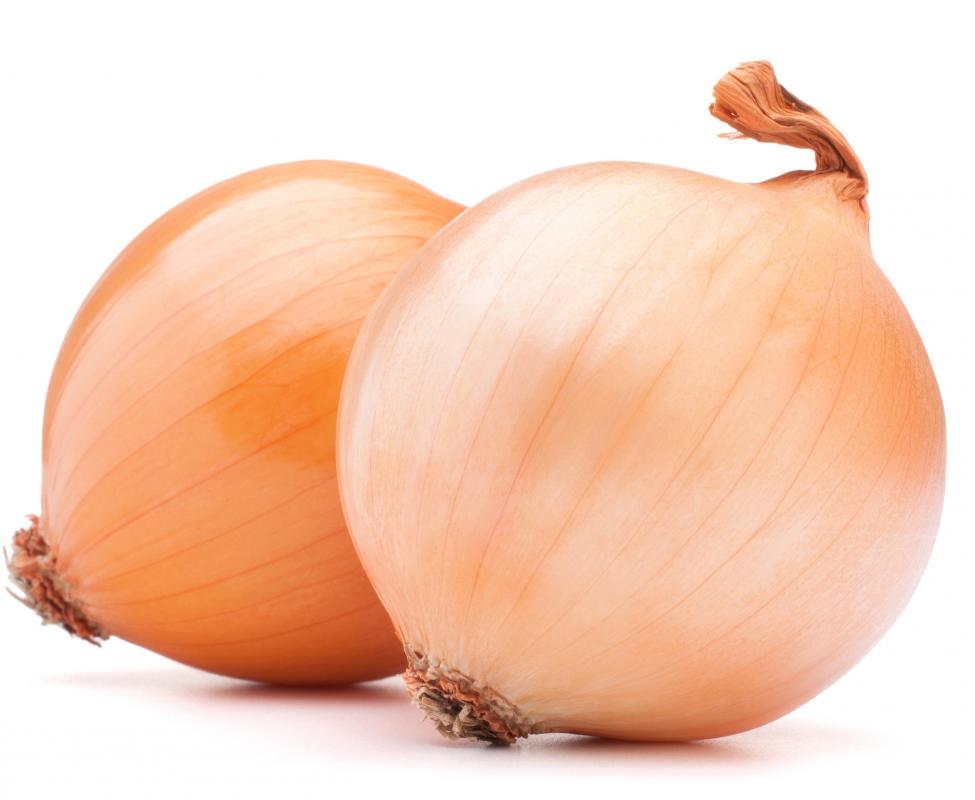At DelightedCooking, we're committed to delivering accurate, trustworthy information. Our expert-authored content is rigorously fact-checked and sourced from credible authorities. Discover how we uphold the highest standards in providing you with reliable knowledge.
What are Wild Onions?
Wild onions are members of the onion family which grow naturally in the wild, rather than being specifically cultivated. They can be found all over the world, and several species are treated as culinary delicacies, such as the ramp, also known as Allium tricoccum. Gardeners sometimes find these members of the onion family irritating, because they can be difficult to eradicate from flowerbeds and lawns.
Like cultivated onions, wild onions have a distinctive sharp flavor and scent. Many have a very strong odor, which can sometimes make them very easy to identify when they are growing in the wild. As a general rule, the leaves, bulb, and flowers of the onions can all be eaten, with most people concentrating on the leaves, rather than the bulb, as these onions tend to develop small bulbs with shallow roots.

There are a variety of ways to use wild onions, which may also be called wild leeks in some regions of the world. They can be used in many of the same dishes domestic onions are used in, and they can also be grilled, chopped and used as a garnish, roasted, cooked in sauces, and so forth. The pungent flavor and aroma can be a cause for caution, as a small amount will often go a long way.

Wild onions are usually very easy to identify. Aside from the distinctive onion smell, which is usually a good tip-off, they generally have tall, fleshy, blade-like leaves which connect with a small, shallowly-rooted bulb. When flowers appear, they emerge at the ends of tall stalks, and they generally have a slightly papery texture. Wild onions should always be washed before use, and many people peel away the outer layer of onion skin, because it tends to be tough and bitter.
For gardeners who are struggling with a wild onion invasion, there are a number of options. Some gardeners simply embrace these perennial plants, because they require minimal maintenance and the green foliage can be attractive. For gardeners who dislike the look of the plants or find the smell intolerable, the best way to deal with wild onions is to wait for them to die back, rake away the foliage, and then pass the soil through a screen to remove the bulbs. Screening will also break up lumps in the soil, making it easier to grow things in the following year.
AS FEATURED ON:
AS FEATURED ON:












Discussion Comments
If anything, the stems are an excellent substitute for fresh chives on salads and baked potatoes. They store for weeks in the refrigerator and months in the freezer. You can even string them up to dry with needle and thread.
Early spring is the best time to harvest since the plants are more tender. We just harvested a bunch of them today and will make them more tender by boiling a few minutes in a 1/4 cup of water before adding to eggs tonight.
Late summer wild onions tend to be harder to digest and three to four minutes of boiling is the only way I know to make them tender again.
I tried eating wild onion. It was extremely bitter. Unpleasantly bitter. And 15 minutes after eating it, I starting spontaneously puking and threw up my entire dinner (fish and one wild onion bulb). I don't recommend eating it.
Can you tell me how hard you think it would be to cultivate these in pots? I found three large (for wild onions) bulbs in the flower bed. I want to grow them in a pot. Do you think they would survive that way?
Wild onions are one of those plants that people treat as a pest most of the time, but if you're looking to garden on the cheap and grow your own food, they can be quite a tasty addition to your diet.
Because they grow so fast and spread so easily, you have to be careful not to let them take over your garden beds; try isolating them in a standing bed by themselves. They grow like weeds – literally – so you can pretty much ignore them and then later turn them into onion dip, leek soup, deliciously strong onion broth, and more. Unless you despise onions, just weeding them out feels like a waste.
Post your comments